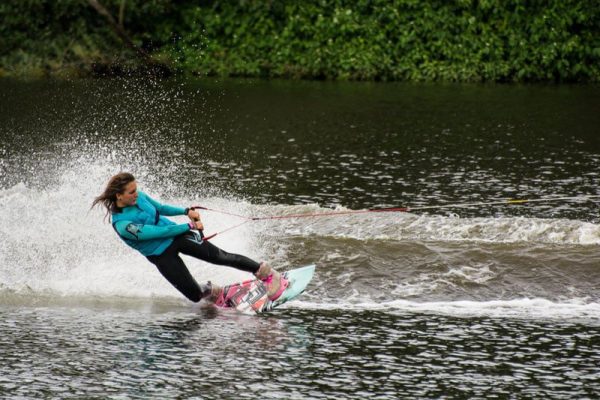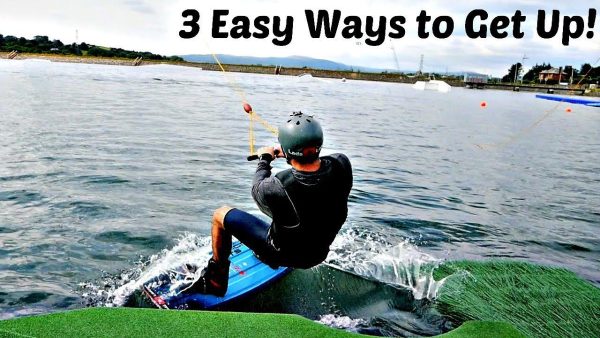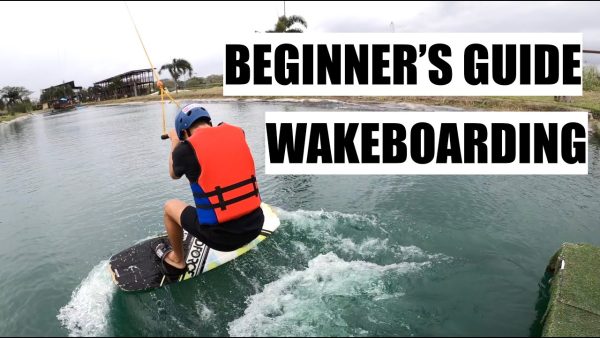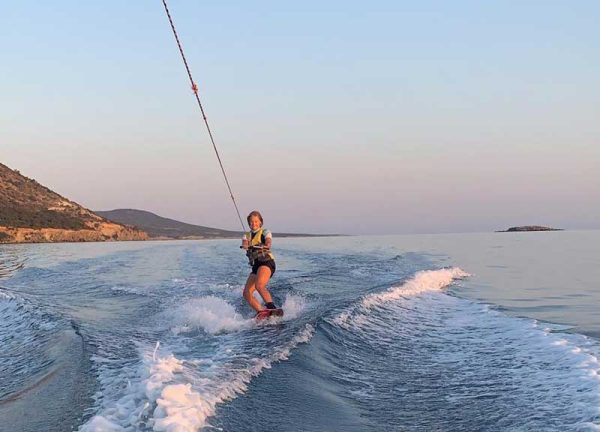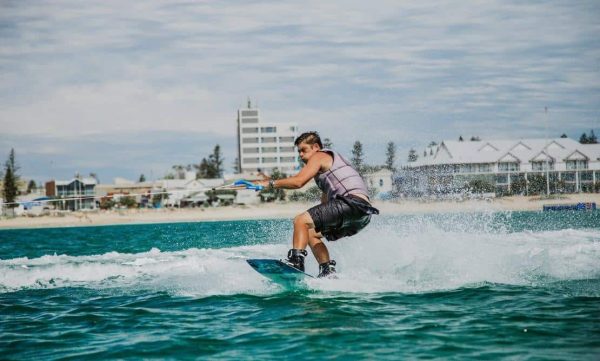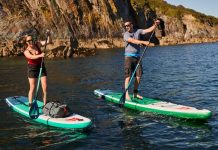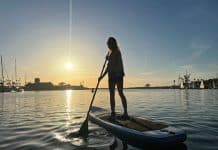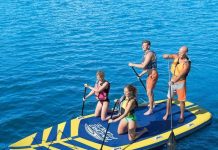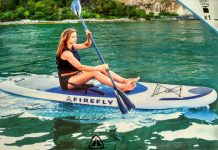Looking to try an exciting new water sport this summer? Look no further than wakeboarding! In this beginner’s guide, we’ll show you everything you need to know to get started with wakeboarding. From learning how to stand up on the board to navigating the wakes, we’ve got you covered. Get ready to experience the thrill of gliding across the water and mastering some impressive tricks. So grab your board and let’s dive into the world of wakeboarding!
Choosing the Right Equipment
Selecting the Wakeboard
When it comes to wakeboarding, choosing the right equipment is crucial to ensure a safe and enjoyable experience on the water. One of the first things to consider is selecting the perfect wakeboard. There are various factors to consider when making this decision, such as your skill level, weight, and personal preference. Beginners might want to opt for a longer and wider board, as it provides better stability and makes it easier to learn the basics. More advanced riders might prefer a shorter and narrower board for better maneuverability and control. It’s also important to consider the type of riding you plan to do, whether it’s recreational cruising or more aggressive tricks and jumps.
Choosing the Bindings
In addition to the wakeboard, selecting the right bindings is equally important. Bindings are the boots that attach your feet to the wakeboard and provide the necessary support and control. There are different types of bindings available, including open-toe and closed-toe options. Open-toe bindings allow for more flexibility in sizing and are great for multiple riders with different foot sizes. Closed-toe bindings, on the other hand, provide a snugger fit and are ideal for riders who prioritize responsiveness and performance. It’s essential to try on different bindings and ensure a comfortable and secure fit before making a final decision.
Deciding on the Rope and Handle
The rope and handle are essential components of wakeboarding equipment, as they provide the necessary connection between the rider and the boat. When choosing a rope, it’s important to consider the material, length, and thickness. The most common material for a wakeboarding rope is a polyethylene blend, which offers durability and good grip. As for the length, it typically varies between 60 to 75 feet, depending on your riding style and boat setup. Thicker ropes are preferred by more advanced riders, as they provide better control, whereas thinner ropes are suitable for beginners. The handle, on the other hand, should be comfortable to grip and have a sturdy construction to withstand the forces exerted while wakeboarding.
Picking the Appropriate Life Vest
Lastly, but certainly not least, selecting the appropriate life vest is crucial for safety on the water. A life vest, also known as a personal floatation device (PFD), is designed to keep you buoyant in case of a fall or accident. When choosing a life vest, make sure it is Coast Guard-approved and fits you snugly. There are different types of life vests available, including those specifically designed for wakeboarding that provide more mobility and flexibility. It’s important to prioritize safety and comfort when selecting a life vest, as it could potentially save your life in case of an emergency.
Preparing and Setting Up
Finding the Perfect Location
Before you can hit the water, it’s important to find the perfect location for your wakeboarding adventure. Look for a lake or river that allows wakeboarding and has suitable conditions for your level of experience. Consider factors such as water depth, the presence of obstacles or other boats, and the availability of amenities such as a boat ramp or dock. It’s also important to check if there are any local rules or regulations regarding wakeboarding in the area. By finding the right location, you can ensure a safe and enjoyable experience for everyone involved.
Checking the Boat and Equipment
Once you’ve found the perfect location, it’s time to check the boat and equipment before heading out on the water. Start by inspecting the boat to ensure it’s in proper working condition. Check the engine, fuel levels, and all essential components such as the steering, throttle, and safety equipment. Make sure you have a first aid kit, fire extinguisher, and any other required safety gear on board. Additionally, inspect the wakeboard, bindings, rope, and handle for any signs of damage or wear and tear. It’s important to address any issues or replace faulty equipment before getting on the water to prevent accidents or injuries.
Setting Up the Wakeboarding Tower
Setting up the wakeboarding tower is an essential step in preparing for your wakeboarding session. The wakeboarding tower is a structure installed on the boat that provides a higher attachment point for the rope, allowing for better performance and higher jumps. To set up the wakeboarding tower, follow the manufacturer’s instructions and ensure it is securely attached to the boat. Adjust the height and angle of the tower to suit your riding style and preferences. Once the tower is properly set up, it’s time to attach the rope and handle and get ready for some thrilling wakeboarding action.
Adjusting the Speed and Rope Length
Before you start wakeboarding, it’s important to adjust the speed and rope length according to your skill level and riding goals. For beginners, it’s recommended to start at a slower speed, around 15-18 mph, to get comfortable and learn the basics of balance and control. As you progress and gain more confidence, you can gradually increase the speed. The rope length is also a crucial factor in wakeboarding. Beginners might want to start with a shorter rope length, around 55-60 feet, to minimize the distance between the boat and the rider, making it easier to get up and maintain control. More advanced riders can experiment with longer rope lengths to increase the challenge and perform more advanced maneuvers.
This image is property of coresites-cdn-adm.imgix.net.
Getting Started
Understanding the Stance and Position
Before you hop on your wakeboard, it’s essential to understand the proper stance and position. The stance refers to how you position your feet on the wakeboard. Most riders adopt either a regular stance, with the left foot in front, or a goofy stance, with the right foot in front. It’s important to find your natural stance and position your feet accordingly. When it comes to body position, it’s crucial to keep your knees slightly bent, maintain a low center of gravity, and keep your weight evenly distributed on both feet. This will help you maintain balance and control while riding.
Learning How to Hold the Rope
Holding the rope correctly is a fundamental skill in wakeboarding. Start by gripping the handle with both hands, palms facing down, and make sure your hands are evenly spaced. The handle should be held at waist level, with your elbows slightly bent. Keep your arms relaxed and avoid locking your elbows, as this will allow for better flexibility and maneuverability. It’s important to maintain a firm grip on the handle throughout the ride to prevent it from slipping out of your hands.
Practicing Proper Balance
Maintaining proper balance is essential in wakeboarding, as it affects your control and stability on the water. Practice balancing on the wakeboard in a still, shallow water area before attempting to ride behind the boat. Start by placing both feet on the board, shoulder-width apart, and keep your knees slightly bent. Engage your core muscles to maintain stability and practice shifting your weight from side to side to simulate the movement of the board on the water. By practicing proper balance, you’ll be better prepared to tackle the challenges of wakeboarding and stay on your feet.
Mastering Getting Up on the Board
Getting up on the wakeboard is often one of the most challenging parts for beginners. To master this skill, start by floating in the water with the wakeboard in front of you. Keep your knees bent and grip the handle with both hands. As the boat starts moving, allow your body to be pulled by the rope while maintaining a balanced and low position. As the tension of the rope increases, gradually stand up by pushing against the water with your legs while keeping your arms extended. Once you’re in a standing position, maintain a slight crouch to absorb the bumps and maintain control. It might take a few tries to master, but with practice and persistence, you’ll be able to confidently get up on the board.
Basic Wakeboarding Techniques
Learning How to Edge and Carve
Learning how to edge and carve is essential for control and maneuverability in wakeboarding. Edging refers to the motion of the board’s edges cutting through the water, which creates resistance and generates speed. To initiate an edge, shift your weight to your toes or heels, depending on the desired direction. As you edge, bend your knees and maintain a low center of gravity to increase stability. Carving, on the other hand, involves making smooth turns by shifting your weight and applying pressure to the toes or heels. It’s important to practice edging and carving on both sides to improve overall skill and versatility.
Perfecting Straight Riding
Once you’ve mastered the basic edging and carving techniques, it’s time to focus on perfecting straight riding. Straight riding involves maintaining a consistent and balanced position while riding parallel to the boat’s wake. To achieve this, keep your eyes focused forward and your body centered over the board. Avoid leaning too far forward or backward, as this can throw off your balance and control. Practice maintaining a straight riding position for longer durations to build endurance and improve overall riding efficiency.
Executing Basic Tricks and Jumps
Once you’ve become comfortable with the fundamentals of wakeboarding, you can start experimenting with basic tricks and jumps. Begin with simple tricks such as grabs, where you reach down and grab the board while in the air, or surface tricks, where you use the water surface to launch yourself into the air. These tricks can add an extra flair to your wakeboarding sessions and provide a foundation for more advanced maneuvers. Start by attempting small jumps and gradually increase the height and complexity of the tricks as your skills develop.
Mastering Surface Tricks
Surface tricks are a fun way to add style and creativity to your wakeboarding sessions. These tricks are performed while riding close to the water’s surface and can include spins, slides, and various grabs. Spins involve rotating your body or board while in the air, while slides require grinding or sliding along an obstacle such as a rail or box. Grabs involve reaching down and grabbing the board with one hand or both hands while in the air. Surface tricks require good balance and body control, so be sure to start with smaller, more manageable tricks and gradually work your way up to more advanced maneuvers.
This image is property of i.ytimg.com.
Advanced Wakeboarding Maneuvers
Mastering Advanced Edging Techniques
As you progress in wakeboarding, you’ll want to start mastering advanced edging techniques. These techniques involve using the edges of the wakeboard to generate speed and execute more advanced maneuvers. Progressive edging refers to gradually increasing the pressure and speed while carving, which allows for smoother transitions and more powerful moves. Additionally, aggressive edging involves applying maximum pressure to the edges, resulting in explosive takeoffs and high jumps. These advanced edging techniques require a combination of skill, balance, and proper body positioning, so be sure to practice and master the basics before attempting them.
Performing Grab Tricks
Grab tricks are a staple in the repertoire of any advanced wakeboarder. These tricks involve reaching down and grabbing the board with one hand or both hands while in the air. There are various types of grabs, including mute grab, method grab, indy grab, and many more. Each grab adds a unique style and challenge to your wakeboarding maneuvers. Start by attempting simpler grabs and gradually work your way up to more complex and stylish grabs. It’s important to maintain control and proper body position throughout the trick to ensure a smooth landing.
Attempting Inverts and Spins
Inverts and spins are advanced wakeboarding maneuvers that require a combination of skill, technique, and confidence. Inverts involve flipping the board upside down while in the air, whereas spins refer to rotating the board or body 180 degrees or more. These maneuvers can be executed off the wake, using ramps, or on obstacles such as kickers or sliders. It’s important to practice proper body positioning and maintain a centered and balanced approach to successfully execute inverts and spins. These maneuvers can be challenging and require a gradual progression, so be sure to attempt them under the guidance of an experienced wakeboarder or instructor.
Exploring Wake-to-Wake Jumps
Wake-to-wake jumps are the epitome of advanced wakeboarding and require skill, technique, and confidence. These jumps involve launching off one wake and landing on the other wake while clearing the space in between. To successfully execute wake-to-wake jumps, it’s crucial to have a solid foundation in edging, balance, and control. Start by practicing small jumps and gradually increase the distance and height as you gain confidence and proficiency. Timing and coordination are key in successfully clearing the wake and achieving a smooth landing.
Wakeboarding Safety Tips
Wearing Proper Safety Gear
Wakeboarding is an exhilarating and fun sport, but safety should always be a top priority. One of the most important safety measures is wearing the proper safety gear. A properly fitting and Coast Guard-approved life vest should be worn at all times, regardless of your swimming ability. Additionally, wearing a helmet can provide protection in case of falls or collisions. It’s also recommended to wear a wetsuit or rash guard to protect your skin from friction and sunburn. By wearing the appropriate safety gear, you can minimize the risk of injury while enjoying your wakeboarding adventure.
Communicating with the Boat Driver
Clear and effective communication with the boat driver is crucial for a safe and enjoyable wakeboarding experience. Before getting in the water, establish a set of hand signals or verbal cues to communicate with the driver. These signals can be used to indicate speed adjustments, direction changes, or if you need to stop. Make sure everyone on the boat understands and follows the communication protocol to prevent misunderstandings and accidents. Open and constant communication with the boat driver will ensure a smooth and safe ride for everyone involved.
Understanding Right of Way Rules
Just like any other water sport, wakeboarding has right of way rules that help maintain order and safety on the water. It’s important to understand these rules and follow them at all times. Generally, the rider on the inside of the boat has priority, and other riders should yield to them. It’s important to be aware of other boats, swimmers, or obstacles, and give them a wide berth to avoid collisions. Additionally, maintaining a safe distance from the wakes of other boats and respecting buoy markers is essential for everyone’s safety. Understanding and respecting right of way rules will create a harmonious and safe environment for wakeboarding.
Avoiding Dangerous Areas
When wakeboarding, it’s important to be mindful of dangerous areas that could pose a risk to your safety. Stay away from shallow areas, submerged objects, or areas with strong currents or undertow. These conditions can lead to injuries or accidents. It’s also important to be aware of other boats, watercraft, or swimmers in the vicinity and maintain a safe distance from them. By avoiding dangerous areas and being aware of your surroundings, you can minimize the risk of accidents or injuries while enjoying your wakeboarding adventure.
This image is property of i.ytimg.com.
Common Wakeboarding Mistakes to Avoid
Leaning Back on the Board
One common mistake beginners make in wakeboarding is leaning back on the board. Leaning back shifts your weight off-center and makes it more difficult to maintain balance and control. Instead, focus on keeping your weight centered and distributed evenly on both feet. By maintaining a neutral position, you’ll have better stability and control while riding.
Pulling with the Arms instead of the Whole Body
Another mistake often made by beginners is relying solely on their arm strength to hold onto the rope. Wakeboarding is a full-body workout, and it’s important to engage your entire body, including your core and leg muscles, to provide the necessary strength and stability. Rather than using only your arms, focus on using your entire body to absorb the forces and maintain control.
Not Keeping the Handle Close
Not keeping the handle close is another common mistake that can disrupt your balance and control. The handle acts as your connection to the boat, and by keeping it close to your body, you’ll have better leverage and control. Avoid extending your arms fully or letting the handle drift away from your body. Keep your elbows slightly bent and your arms relaxed to maintain a firm grip and control over the direction and speed of your ride.
Neglecting Consistent Practice
One of the biggest mistakes wakeboarders of all levels can make is neglecting consistent practice. Wakeboarding is a skill that requires time, practice, and repetition to improve. By dedicating regular practice sessions, you’ll build muscle memory, improve your balance and control, and progress to more advanced maneuvers. Consistency is key in any sport, and wakeboarding is no exception. Set aside dedicated practice time and be persistent in your efforts, and you’ll see steady improvement in your wakeboarding skills.
Maintaining Wakeboarding Fitness
Working on Core Strength and Stability
Maintaining a strong core is essential for wakeboarding, as it provides stability and control on the water. Incorporate exercises that target your abdominal muscles, lower back, and obliques to build core strength. Planks, Russian twists, and stability ball exercises are excellent options for improving core strength and stability. By regularly working on your core muscles, you’ll have better control over your balance and maneuverability while wakeboarding.
Building Leg Muscles for Balance
Strong leg muscles are crucial for maintaining balance and stability while wakeboarding. Incorporate exercises that target your quads, hamstrings, and calf muscles into your fitness routine. Squats, lunges, and calf raises are excellent exercises for building leg strength. Additionally, incorporating balance exercises such as single-leg stands or yoga poses will enhance your stability and control. By strengthening your leg muscles, you’ll have better control over the board and be able to tackle more challenging maneuvers.
Improving Endurance and Stamina
Wakeboarding can be physically demanding, requiring endurance and stamina to ride for extended periods. To improve your endurance and stamina, incorporate cardiovascular exercises into your fitness routine. Activities such as running, swimming, cycling, or rowing will help increase your overall endurance level. Additionally, interval training, such as high-intensity interval training (HIIT), can mimic the intensity and demands of wakeboarding and improve your cardiovascular fitness.
Incorporating Cross-Training Exercises
Cross-training exercises can be beneficial for wakeboarding, as they target various muscle groups and improve overall fitness. Incorporate exercises such as yoga, Pilates, or cross-training workouts that focus on flexibility, balance, and strength. These exercises can help improve your overall body control, coordination, and flexibility, which are crucial in wakeboarding. By incorporating cross-training exercises into your routine, you’ll enhance your overall wakeboarding performance and reduce the risk of injuries.
This image is property of www.latchiwatersportscentre.com.
Exploring Different Types of Wakeboarding
Cable Wakeboarding
Cable wakeboarding is an alternative form of wakeboarding that uses cables or pulleys to tow riders across the water. This allows riders to perform tricks and jumps without requiring a boat. Cable parks usually consist of various obstacles such as rails, boxes, and kickers, which add an extra dimension of challenge and creativity to the sport. Cable wakeboarding is a great option for riders who don’t have access to a boat or prefer a different riding experience.
Obstacle and Park Riding
Obstacle and park riding is a popular sub-discipline of wakeboarding that involves navigating various obstacles such as rails, boxes, and kickers. These obstacles require precise control and technique to slide, grind, or jump over them. Obstacle and park riding can be done behind a boat or at a cable park specifically designed for this style of riding. It’s a thrilling and creative aspect of wakeboarding that allows riders to showcase their skills and style.
Wake Surfing
Wake surfing is a relatively new and rapidly growing discipline in wakeboarding. Unlike traditional wakeboarding, wake surfing involves riding the boat’s wake without being towed by a rope. Instead, the rider uses the boat’s wake to generate speed and stay in the wave. Wake surfers ride a specially designed surfboard and can perform tricks, spins, and even ride switch. Wake surfing provides a unique and exhilarating experience, and it’s a great option for riders looking for a different challenge on the water.
Wake Skating
Wake skating is a cousin sport of wakeboarding that involves riding a skateboard-like board on the water. Wake skaters don’t use bindings and rely on grip tape and their shoes for traction and control. Wake skating combines elements of skateboarding, wakeboarding, and even snowboarding to create a unique riding experience. It’s a popular choice for riders who want a different feel and challenge on the water.
Resources for Further Learning
Online Wakeboarding Tutorials
The internet offers a wealth of resources for beginners and experienced wakeboarders looking to learn and improve their skills. Online wakeboarding tutorials provide step-by-step instructions, tips, and techniques for various maneuvers and tricks. These tutorials can be accessed through websites, blogs, or video platforms and offer valuable insights from experienced wakeboarders.
Instructional Wakeboarding Videos
Watching instructional wakeboarding videos is a great way to learn from experienced riders and see the techniques and maneuvers in action. Many wakeboarding professionals and enthusiasts share instructional videos on platforms such as YouTube or Vimeo, providing valuable insights and demonstrations. These videos can be a helpful supplement to online tutorials and provide visual guidance for mastering specific tricks and techniques.
Wakeboarding Camps and Classes
For a more hands-on learning experience, consider enrolling in a wakeboarding camp or class. These programs are often held at wakeboarding schools or dedicated wakeboarding facilities and offer structured lessons and coaching. Wakeboarding camps and classes are suitable for all skill levels and provide a supportive and immersive environment for learning and progression. Instructors can provide personalized feedback and guidance to help you improve your wakeboarding skills.
Books and Magazines on Wakeboarding
For those who prefer traditional learning methods, books and magazines on wakeboarding provide a wealth of information and inspiration. These resources often cover various aspects of wakeboarding, including equipment selection, technique tips, and stories from experienced riders. Wakeboarding books and magazines can be purchased online or found in local sports stores or libraries, offering a comprehensive and tangible resource for wakeboarding enthusiasts.
In conclusion, wakeboarding is a thrilling and exhilarating water sport that offers endless opportunities for fun and progression. By choosing the right equipment, preparing and setting up properly, and mastering the fundamental techniques, you can embark on an exciting wakeboarding journey. As you gain experience and build your skills, you can explore advanced maneuvers and different types of wakeboarding. Remember to prioritize safety, maintain fitness, and continue learning and growing in this exciting sport. So grab your wakeboard, gear up, and get ready for a thrilling ride on the water!
This image is property of cms-media.getmyboat.com.


